Qingyang Zhu
Unsupervised Morphological Tree Tokenizer
Jun 21, 2024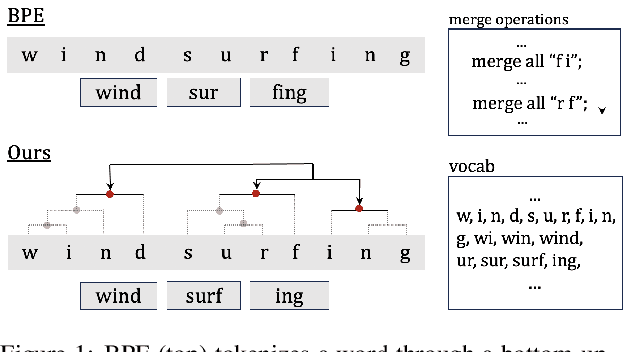
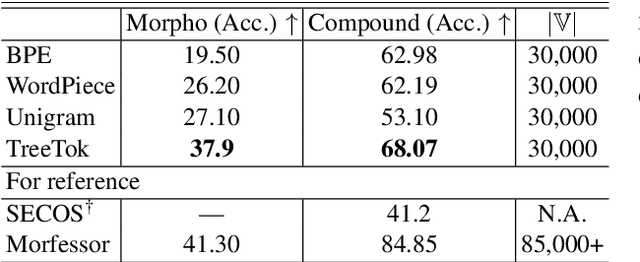
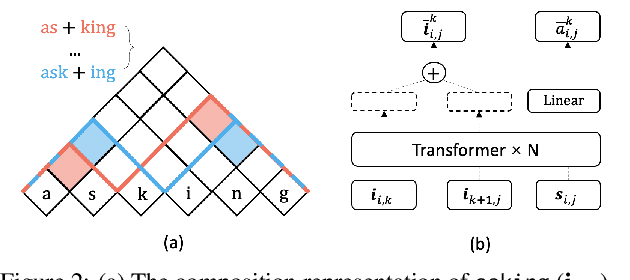
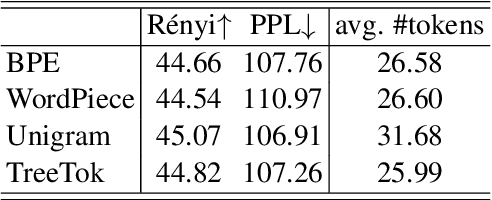
Abstract:As a cornerstone in language modeling, tokenization involves segmenting text inputs into pre-defined atomic units. Conventional statistical tokenizers often disrupt constituent boundaries within words, thereby corrupting semantic information. To address this drawback, we introduce morphological structure guidance to tokenization and propose a deep model to induce character-level structures of words. Specifically, the deep model jointly encodes internal structures and representations of words with a mechanism named $\textit{MorphOverriding}$ to ensure the indecomposability of morphemes. By training the model with self-supervised objectives, our method is capable of inducing character-level structures that align with morphological rules without annotated training data. Based on the induced structures, our algorithm tokenizes words through vocabulary matching in a top-down manner. Empirical results indicate that the proposed method effectively retains complete morphemes and outperforms widely adopted methods such as BPE and WordPiece on both morphological segmentation tasks and language modeling tasks. The code will be released later.
Generative Pretrained Structured Transformers: Unsupervised Syntactic Language Models at Scale
Mar 18, 2024Abstract:A syntactic language model (SLM) incrementally generates a sentence with its syntactic tree in a left-to-right manner. We present Generative Pretrained Structured Transformers (GPST), an unsupervised SLM at scale capable of being pre-trained from scratch on raw texts with high parallelism. GPST circumvents the limitations of previous SLMs such as relying on gold trees and sequential training. It consists of two components, a usual SLM supervised by a uni-directional language modeling loss, and an additional composition model, which induces syntactic parse trees and computes constituent representations, supervised by a bi-directional language modeling loss. We propose a representation surrogate to enable joint parallel training of the two models in a hard-EM fashion. We pre-train GPST on OpenWebText, a corpus with $9$ billion tokens, and demonstrate the superiority of GPST over GPT-2 with a comparable size in numerous tasks covering both language understanding and language generation. Meanwhile, GPST also significantly outperforms existing unsupervised SLMs on left-to-right grammar induction, while holding a substantial acceleration on training.
Augmenting transformers with recursively composed multi-grained representations
Sep 28, 2023
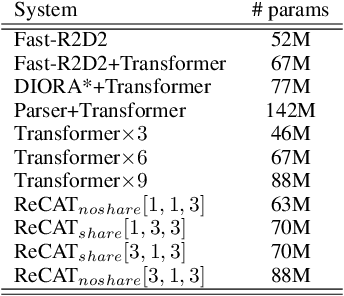

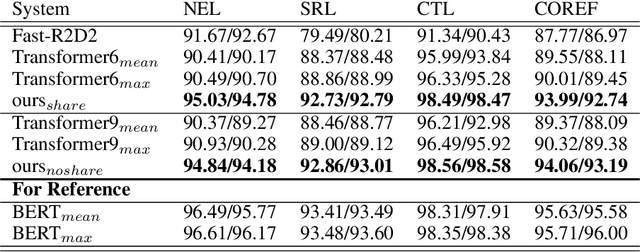
Abstract:We present ReCAT, a recursive composition augmented Transformer that is able to explicitly model hierarchical syntactic structures of raw texts without relying on gold trees during both learning and inference. Existing research along this line restricts data to follow a hierarchical tree structure and thus lacks inter-span communications. To overcome the problem, we propose a novel contextual inside-outside (CIO) layer that learns contextualized representations of spans through bottom-up and top-down passes, where a bottom-up pass forms representations of high-level spans by composing low-level spans, while a top-down pass combines information inside and outside a span. By stacking several CIO layers between the embedding layer and the attention layers in Transformer, the ReCAT model can perform both deep intra-span and deep inter-span interactions, and thus generate multi-grained representations fully contextualized with other spans. Moreover, the CIO layers can be jointly pre-trained with Transformers, making ReCAT enjoy scaling ability, strong performance, and interpretability at the same time. We conduct experiments on various sentence-level and span-level tasks. Evaluation results indicate that ReCAT can significantly outperform vanilla Transformer models on all span-level tasks and baselines that combine recursive networks with Transformers on natural language inference tasks. More interestingly, the hierarchical structures induced by ReCAT exhibit strong consistency with human-annotated syntactic trees, indicating good interpretability brought by the CIO layers.
Domain Generalization Deep Graph Transformation
May 23, 2023Abstract:Graph transformation that predicts graph transition from one mode to another is an important and common problem. Despite much progress in developing advanced graph transformation techniques in recent years, the fundamental assumption typically required in machine-learning models that the testing and training data preserve the same distribution does not always hold. As a result, domain generalization graph transformation that predicts graphs not available in the training data is under-explored, with multiple key challenges to be addressed including (1) the extreme space complexity when training on all input-output mode combinations, (2) difference of graph topologies between the input and the output modes, and (3) how to generalize the model to (unseen) target domains that are not in the training data. To fill the gap, we propose a multi-input, multi-output, hypernetwork-based graph neural network (MultiHyperGNN) that employs a encoder and a decoder to encode topologies of both input and output modes and semi-supervised link prediction to enhance the graph transformation task. Instead of training on all mode combinations, MultiHyperGNN preserves a constant space complexity with the encoder and the decoder produced by two novel hypernetworks. Comprehensive experiments show that MultiHyperGNN has a superior performance than competing models in both prediction and domain generalization tasks.
 Add to Chrome
Add to Chrome Add to Firefox
Add to Firefox Add to Edge
Add to Edge